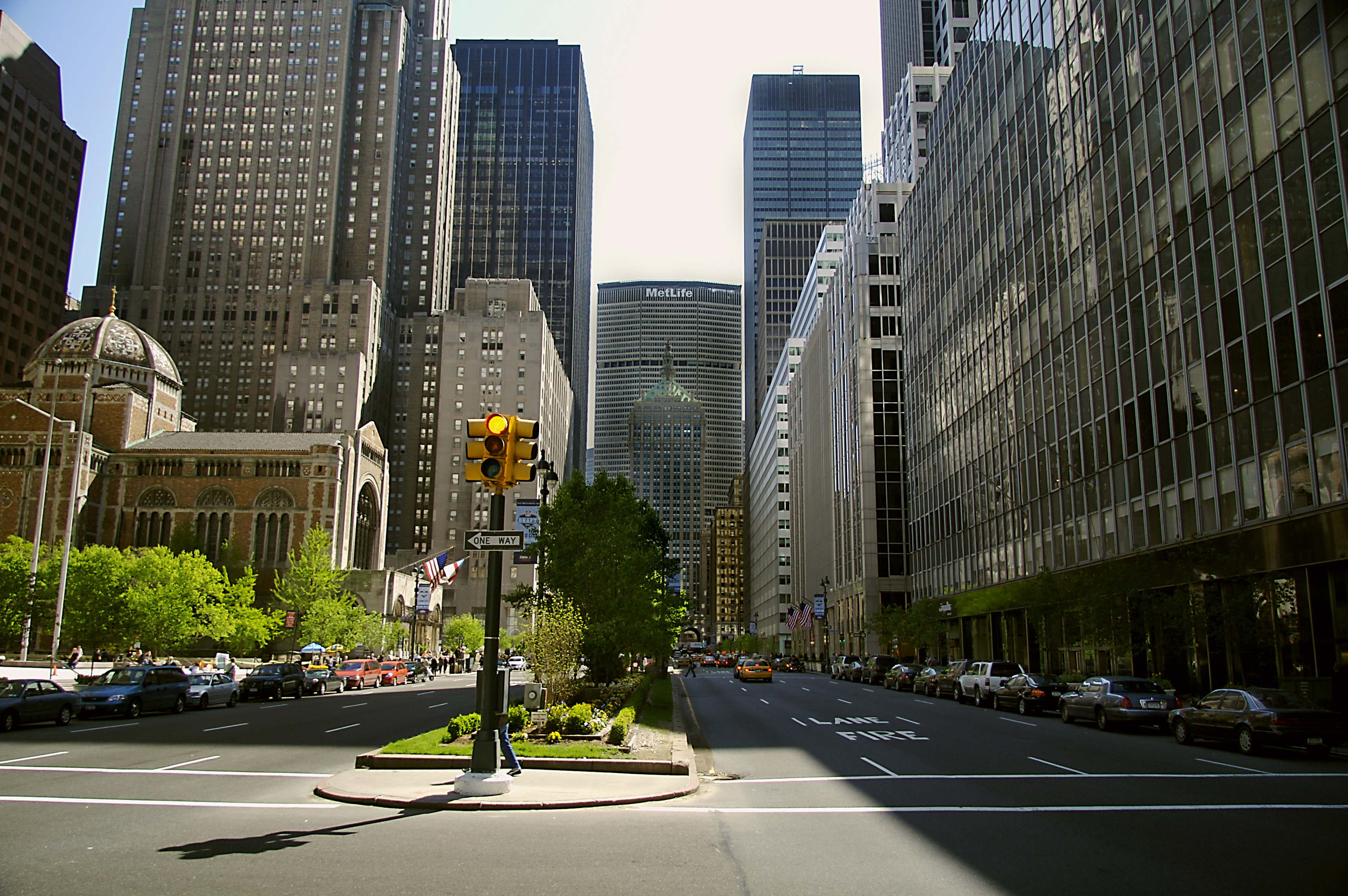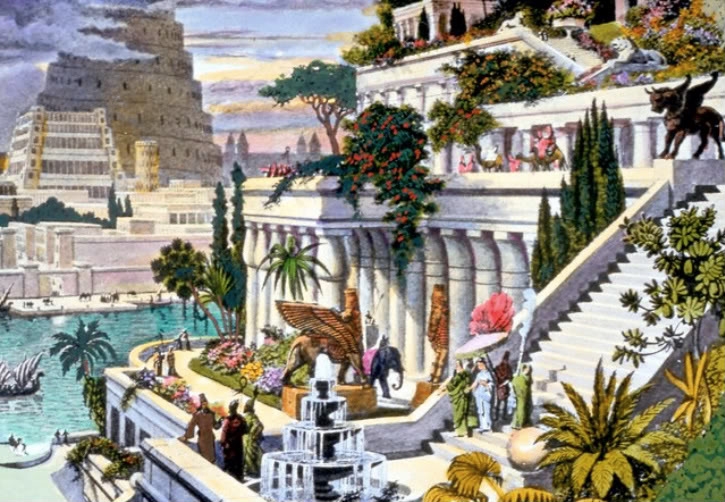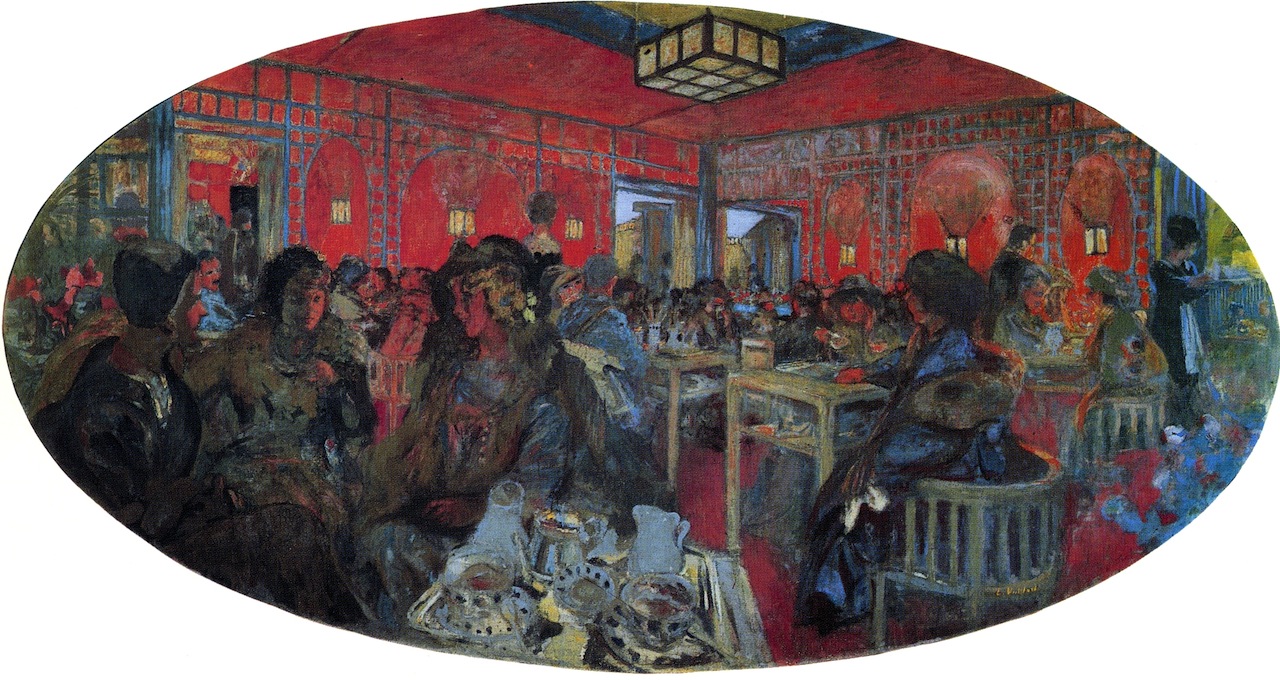|
Rue Caumartin
The Rue de Caumartin in the 9th arrondissement of Paris received its name from Antoine-Louis Lefebvre de Caumartin, marquis de Saint-Ange, Comte de Moret (1725-1803), who was prévôt des marchands (1778-1784). He gave the authorization to open the street on 3 July 1779. Opened in 1780, the street extended from the rue Basse-du-Rempart located at the foot of the rampart (now Boulevard des Capucines) to rue Neuve-des-Mathurins through land acquired from the priests mathurins by Charles-Marin Delahaye, general-farmer. Further on the north, was the small street Thiroux opened in 1773 by President Thiroux of Arconvillé. And the small rue Sainte-Croix opened further on the north in 1780 through marshes and fields. The Rue de Caumartin absorbed them on 5 May 1849. The French architect Aubert built 28 mansions in the area, including the n°1 and n°2, on each side of the street at the beginning and the junction with the Boulevard des Capucines. They were decorated with figures in half rel ... [...More Info...] [...Related Items...] OR: [Wikipedia] [Google] [Baidu] |
9th Arrondissement Of Paris
The 9th arrondissement of Paris (''IXe arrondissement'') is one of the 20 arrondissements of the capital city of France. In spoken French, this arrondissement is referred to as the neuvième (; "ninth"). The arrondissement, called Opéra, is located on the right bank of the River Seine. It contains many places of cultural, historical, and architectural interest, including the Palais Garnier, home to the Paris Opera, Boulevard Haussmann, and its large department stores Galeries Lafayette and Printemps. The arrondissement has many theaters including Folies Bergères, Théatre Mogador and Théatre de Paris. Along with the 2nd and 8th arrondissements, it hosts one of the business centers of Paris, located around the Opéra. Geography The land area of this arrondissement is 2.179 km2 (0.841 sq. miles, or 538 acres). Main streets and squares * Place de l'Opéra * Boulevard des Capucines (partial) * Boulevard des Italiens (partial) * Rue des Martyrs (partial) * Boulevard Haussma ... [...More Info...] [...Related Items...] OR: [Wikipedia] [Google] [Baidu] |
Boulevard Haussmann, Paris
A boulevard is a type of broad avenue planted with rows of trees, or in parts of North America, any urban highway. Boulevards were originally circumferential roads following the line of former city walls. In American usage, boulevards may be wide, multi-lane arterial thoroughfares, often divided with a central median, and perhaps with side-streets along each side designed as slow travel and parking lanes and for bicycle and pedestrian usage, often with an above-average quality of landscaping and scenery. Etymology The word ''boulevard'' is borrowed from French. In French, it originally meant the flat surface of a rampart, and later a promenade taking the place of a demolished fortification. It is a borrowing from the Dutch word ' ' bulwark'. Usage world-wide Asia Cambodia Phnom Penh has numerous boulevards scattered throughout the city. Norodom Boulevard, Monivong Boulevard, Sihanouk Boulevard, and Kampuchea Krom Boulevard are the most famous. India * Bengaluru's Ma ... [...More Info...] [...Related Items...] OR: [Wikipedia] [Google] [Baidu] |
Rue Saint-Lazare, Paris
''Ruta graveolens'', commonly known as rue, common rue or herb-of-grace, is a species of ''Ruta'' grown as an ornamental plant and herb. It is native to the Balkan Peninsula. It is grown throughout the world in gardens, especially for its bluish leaves, and sometimes for its tolerance of hot and dry soil conditions. It is also cultivated as a culinary herb, and to a lesser extent as an insect repellent and incense. Etymology The specific epithet ''graveolens'' refers to the strong-smelling leaves.J. D. Douglas and Merrill C. Tenney Description Rue is a woody, perennial shrub. Its leaves are oblong, blue green and arranged pinnate; they release a strong aroma when they are bruised. The flowers are small with 4 to 5 dull yellow petals in clusters. They bear brown seed capsules when pollinated. Uses Traditional use In the ancient Roman world, the naturalists Pedanius Dioscorides and Pliny the Elder recommended that rue be combined with the poisonous shrub oleander to b ... [...More Info...] [...Related Items...] OR: [Wikipedia] [Google] [Baidu] |
Hanging Gardens
The Hanging Gardens of Babylon were one of the Seven Wonders of the Ancient World listed by Hellenic culture. They were described as a remarkable feat of engineering with an ascending series of tiered gardens containing a wide variety of trees, shrubs, and vines, resembling a large green mountain constructed of mud bricks. It was said to have been built in the ancient city of Babylon, near present-day Hillah, Babil province, in Iraq. The Hanging Gardens' name is derived from the Greek word (, ), which has a broader meaning than the modern English word "hanging" and refers to trees being planted on a raised structure such as a terrace. According to one legend, the Hanging Gardens were built alongside a grand palace known as ''The Marvel of Mankind'', by the Neo-Babylonian King Nebuchadnezzar II (who ruled between 605 and 562 BC), for his Median wife, Queen Amytis, because she missed the green hills and valleys of her homeland. This was attested to by the Babylonian priest Be ... [...More Info...] [...Related Items...] OR: [Wikipedia] [Google] [Baidu] |
Honoré Gabriel Riqueti, Comte De Mirabeau
Honoré Gabriel Riqueti, Count of Mirabeau (; 9 March 17492 April 1791) was a leader of the early stages of the French Revolution. A noble, he had been involved in numerous scandals before the start of the Revolution in 1789 that had left his reputation in ruins. Nonetheless, he rose to the top of the French political hierarchy in the years 1789–1791 and acquired the reputation of a voice of the people. A successful orator, he was the leader of the moderate position among revolutionaries by favoring a constitutional monarchy built on the model of Great Britain. When he died (of natural causes), he was a great national hero, even though support for his moderate position was slipping away. The later discovery that he was in the pay of King Louis XVI and the Austrian enemies of France beginning in 1790 brought him into posthumous disgrace. Historians are deeply split on whether he was a great leader who almost saved the nation from the Terror, a venal demagogue lacking political ... [...More Info...] [...Related Items...] OR: [Wikipedia] [Google] [Baidu] |
Stendhal
Marie-Henri Beyle (; 23 January 1783 – 23 March 1842), better known by his pen name Stendhal (, ; ), was a 19th-century French writer. Best known for the novels ''Le Rouge et le Noir'' (''The Red and the Black'', 1830) and ''La Chartreuse de Parme'' (''The Charterhouse of Parma'', 1839), he is highly regarded for the acute analysis of his characters' psychology and considered one of the early and foremost practitioners of realism. A self-proclaimed egotist, he coined the same characteristic in his characters' "Beylism". Life Born in Grenoble, Isère, he was an unhappy child, disliking his "unimaginative" father and mourning his mother, whom he passionately loved, and who died when he was seven. His closest friend was his younger sister, Pauline, with whom he maintained a steady correspondence throughout the first decade of the 19th century. His family was part of the bourgeois class and was attached to the Ancien Regime, explaining his ambiguous view toward Napoleon, the Bour ... [...More Info...] [...Related Items...] OR: [Wikipedia] [Google] [Baidu] |
La Chartreuse De Parme
''The Charterhouse of Parma'' (french: La Chartreuse de Parme, links=no) is a novel by Stendhal published in 1839. Telling the story of an Italian nobleman in the Napoleonic era and later, it was admired by Balzac, Tolstoy, André Gide, di Lampedusa and Henry James. It was inspired by an inauthentic Italian account of the dissolute youth of Alessandro Farnese. The novel has been adapted for opera, film and television. The title refers to a Carthusian monastery, which is only mentioned on the last page of the novel and does not figure significantly in the plot. Plot summary ''The Charterhouse of Parma'' chronicles the adventures of the young Italian nobleman Fabrice del Dongo from his birth in 1798 to his death. Fabrice spends his early years in his family's castle on Lake Como, while most of the rest of the novel is set in a fictionalized Parma (both locations are in modern-day Italy). The book begins with the French army sweeping into Milan and stirring up the sleepy reg ... [...More Info...] [...Related Items...] OR: [Wikipedia] [Google] [Baidu] |
George Sand
Amantine Lucile Aurore Dupin de Francueil (; 1 July 1804 – 8 June 1876), best known by her pen name George Sand (), was a French novelist, memoirist and journalist. One of the most popular writers in Europe in her lifetime, being more renowned than both Victor Hugo and Honoré de Balzac in England in the 1830s and 1840s, Sand is recognised as one of the most notable writers of the European Romantic era, with more than 70 novels to her credit and 50 volumes of various works including novels, tales, plays and political texts. Like her great-grandmother, Louise Dupin, whom she admired, George Sand stood up for women, advocated passion, castigated marriage and fought against the prejudices of a conservative society. Personal life Childhood Amantine Aurore Lucile Dupin, the future George Sand, was born on 1 July 1804 in Paris on Meslay Street to Maurice Dupin de Francueil and Sophie-Victoire Delaborde. She was the paternal great-granddaughter of the Marshal of Fr ... [...More Info...] [...Related Items...] OR: [Wikipedia] [Google] [Baidu] |
The Grand Teddy Tea-rooms Paintings
The Grand Teddy tea-rooms paintings is a collective name for three glue distemper oval paintings executed by Édouard Vuillard for Le Grand Teddy tea-rooms in Paris in 1918. The largest is privately owned, but is sometimes exhibited. One of the smaller works (identified in Vuillard's notes as ''The Cafe'') was featured on an episode of the BBC television programme ''Fake or Fortune?'' which first broadcast on 19 January 2014. The location of the third (called ''The Oysters'' in Vuillard's notes) is currently unknown. Origin The Grand Teddy tea-rooms paintings are three oval paintings in glue distemper on canvas by Édouard Vuillard commissioned by interior designer Francis Jourdain to hang on the walls of the Grand Teddy bar and cafe in Paris. They were painted in 1918. With the closure of the cafe in 1922, the paintings were bought by Jos Hessel, Vuillard's friend and art dealer. Subsequent history The largest (called ''Le Grand Teddy'') shows the fashionable patrons of the ca ... [...More Info...] [...Related Items...] OR: [Wikipedia] [Google] [Baidu] |
Édouard Vuillard
Jean-Édouard Vuillard (; 11 November 186821 June 1940) was a French painter, decorative artist and printmaker. From 1891 through 1900, he was a prominent member of the Nabis, making paintings which assembled areas of pure color, and interior scenes, influenced by Japanese prints, where the subjects were blended into colors and patterns. He also was a decorative artist, painting theater sets, panels for interior decoration, and designing plates and stained glass. After 1900, when the Nabis broke up, he adopted a more realistic style, painting landscapes and interiors with lavish detail and vivid colors. In the 1920s and 1930s he painted portraits of prominent figures in French industry and the arts in their familiar settings. Vuillard was influenced by Paul Gauguin, among other post-impressionist painters. Early life Jean-Édouard Vuillard was born on 11 November 1868 in Cuiseaux ( Saône-et-Loire), where he spent his youth. Vuillard's father was a retired captain of the na ... [...More Info...] [...Related Items...] OR: [Wikipedia] [Google] [Baidu] |
Comédie-Caumartin
The Comédie-Caumartin is a 380-seat capacity theatre located at 25 rue de Caumartin in the 9th arrondissement of Paris. Histoire Inaugurated in 1901 under the name Comédie-Royale, the venue is dedicated to humour and particularly to plays belonging to the boulevard genre. In 1923, René Rocher gave its current name to the place. In February 1958 the Theatre became ''Théâtre d'essai de la chanson''. Pierre Dac and Francis Blanche François Jean Blanche, known as "Francis Blanche" (20 July 1921 – 6 July 1974) was a French actor, singer, humorist and author. He was a very popular figure on stage, radio and in films, during the 1950s and 1960s. Early life Blanche was ... played in the ''Chipolata 58'' show The famous play '' Boeing-Boeing'' by Marc Camoletti was premiered in this theatre on 10 December 1960 and performed here until 1980 before it was moved to the théâtre Michel. Since then, it has been performed about everywhere in the world References ... [...More Info...] [...Related Items...] OR: [Wikipedia] [Google] [Baidu] |






